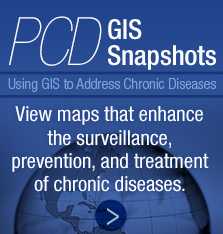
PCD RSS Feed Instructions
What is RSS?
Really Simple Syndication (RSS) is a format designed for sharing headlines and other Web content. It’s an easy way to receive automatic updates from Preventing Chronic Disease (PCD) right to your desktop or browser. Now the content you want can be delivered directly to you without cluttering your inbox with e-mail messages
RSS content is called a feed, or channel. The small software program that collects and displays RSS feeds is called an RSS reader, or aggregator. It allows you to scan headlines from news sources in a central location. Using an RSS reader, you can subscribe to RSS content from PCD and view the latest feeds, including links to the full text of PCD articles.
How do I get an RSS Reader?
Some browsers, such as the current versions of Firefox and Safari, have built-in RSS readers. If you’re using a browser that doesn’t currently support RSS, there are many RSS news readers available for download from the Internet. Click the following link to locate an RSS reader that suits you: List of RSS Readers from DMOZ![]()
How can I sign up for PCD RSS feeds?
Each RSS reader has a slightly different way of adding a new feed but, in most cases, here’s how it works:
- Click on the link or small XML button near the feed you want. You’ll see a page displaying XML code.
- From your web browser’s address bar, copy the URL (Web address). For example, the URL you would copy for PCD updates is: http://www2c.cdc.gov/podcasts/createrss.asp?t=r&c=6.
- Paste that URL into the “Add New Channel” section of the reader. The RSS feed will start to display content and regularly update the headlines for you.
The opinions expressed by authors contributing to this journal do not necessarily reflect the opinions of the U.S. Department of Health and Human Services, the Public Health Service, the Centers for Disease Control and Prevention, or the authors' affiliated institutions.
- Page last reviewed: March 27, 2015
- Page last updated: March 27, 2015
- Content source:
- Maintained By:



 ShareCompartir
ShareCompartir